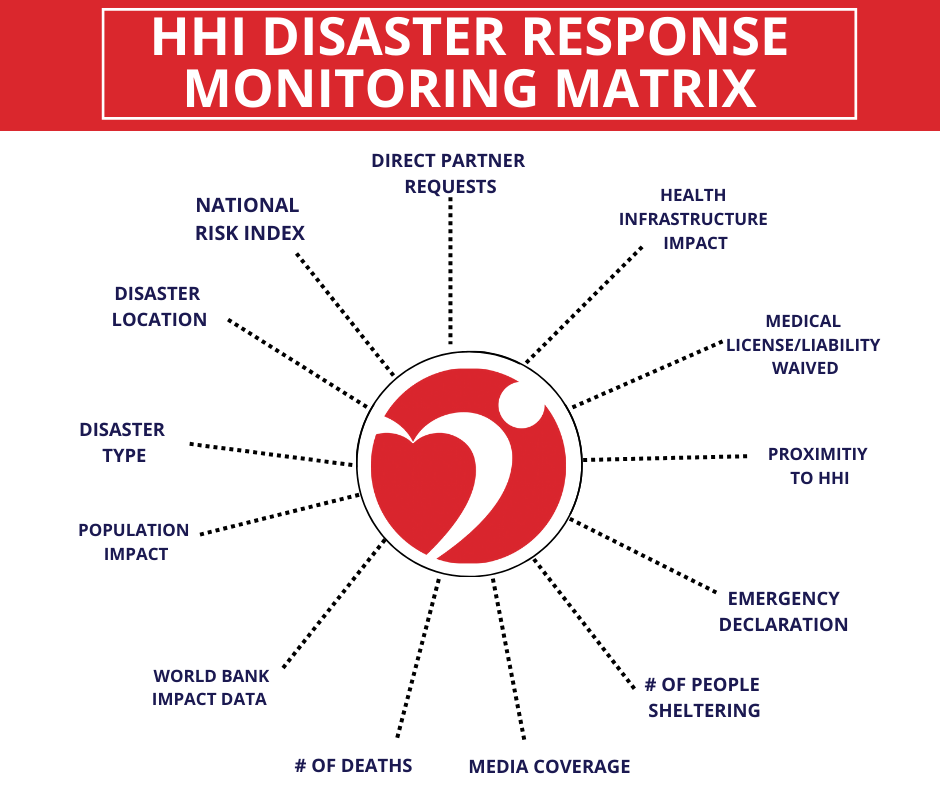In the aftermath of a natural disaster, humanitarian organizations race to provide aid. But with limited resources, it’s crucial to target efforts where they can have the biggest impact. Here at Heart to Heart International (HHI), our Disaster Response Team takes a meticulous approach to choosing which disasters to respond to, prioritizing the health needs of those most affected.
“We carefully evaluate every disaster to ensure we can offer the most appropriate assistance available,” explains JP Fisher, Director of Disaster Response at HHI. “Our objective is to save lives and ensure the disaster-affected health system returns to a state of normality. We must know that our efforts will provide immediate assistance to improving the health of those in need.”
Building a Situational Awareness Picture
HHI utilizes a comprehensive approach to assess a disaster’s impact and determine the best way to support affected communities. As Fisher explains, “We examine the disaster type, population impact, health infrastructure, number of people sheltering, and if there has been a disaster declaration to gain situational awareness, with a specific focus on unmet health needs.”
This process is aided by a detailed Monitoring Matrix (see graphic) that tracks various data points.
By analyzing this data, HHI builds a complete picture of the disaster’s impact on healthcare needs. This allows us to tailor our response, whether it’s deploying mobile medical units, distributing medical supplies, or collaborating with local partners to bridge healthcare gaps.

Matching Resources to Needs
HHI also conducts an internal capacity assessment. “We review our stock on hand, roster of medical and logistics volunteers, and existing partners in the impacted area,” explains Fisher. This ensures they can provide targeted assistance.
“Each disaster is different,” Fisher emphasizes. “For example, in an earthquake response our ability to respond is tied to our availability of medical supplies and equipment, whereas in a hurricane response, we are examining our stock of tetanus vaccines to support cleanup operations and medicines to alleviate water-borne illnesses.”
Bringing it All Together
By considering all these aspects, HHI’s Disaster Response Team ensures they can deliver the right kind of aid at the right time. We leverage our network of volunteers and partner organizations to maximize our effectiveness. This allows the team to respond quickly and efficiently to deliver the right kind of help at the right time.
Ultimately, HHI’s disaster response strategy is about making informed decisions based on a deep understanding of the situation. By focusing on where our resources can have the greatest impact on the health and well-being of disaster-stricken communities, HHI strives to ensure our efforts truly make a difference.
